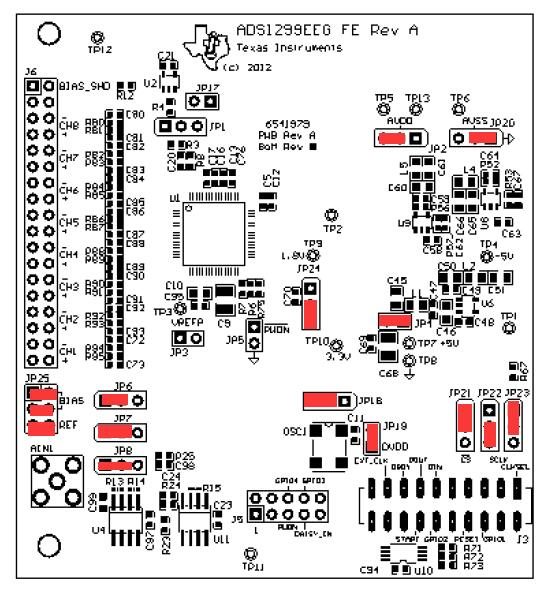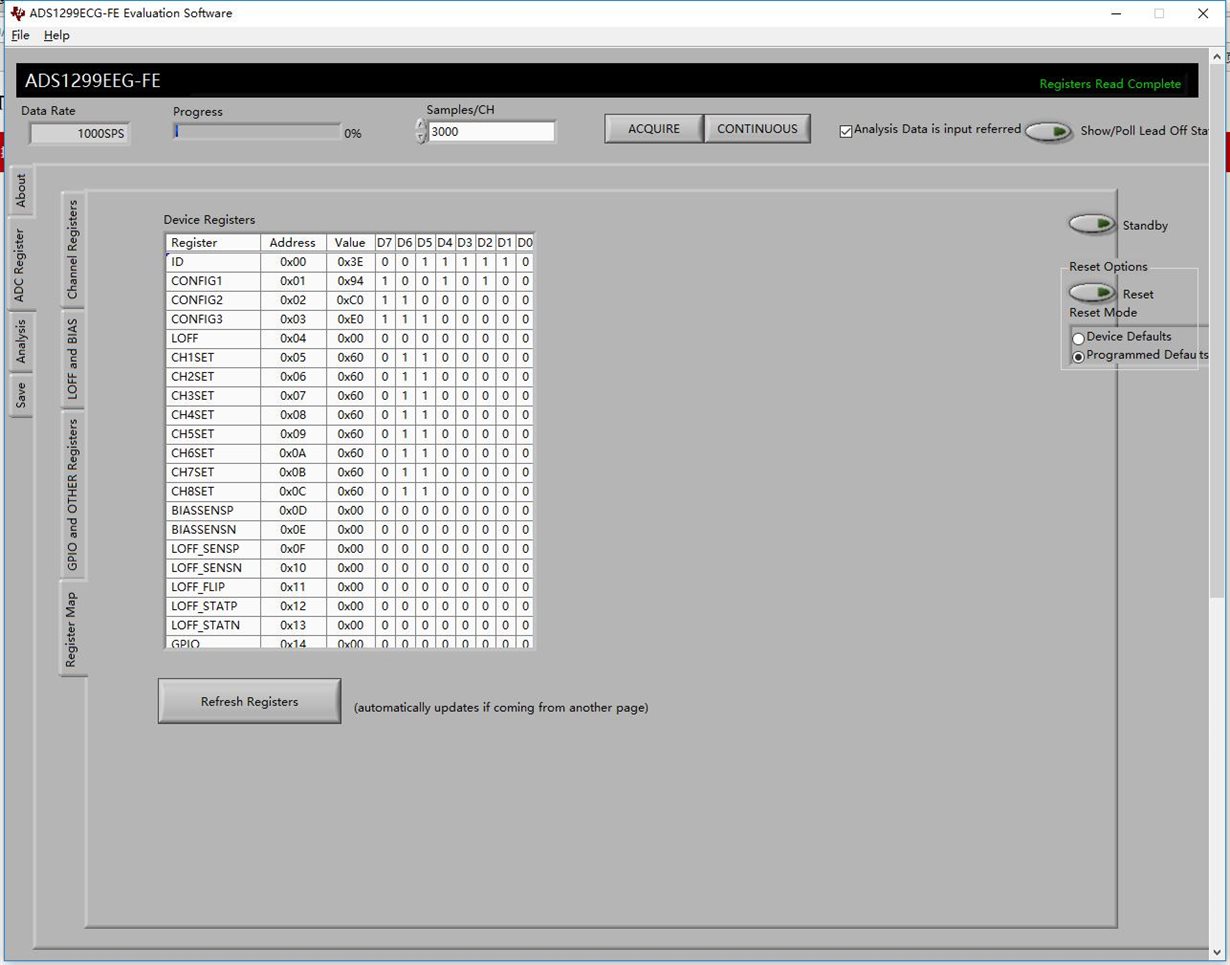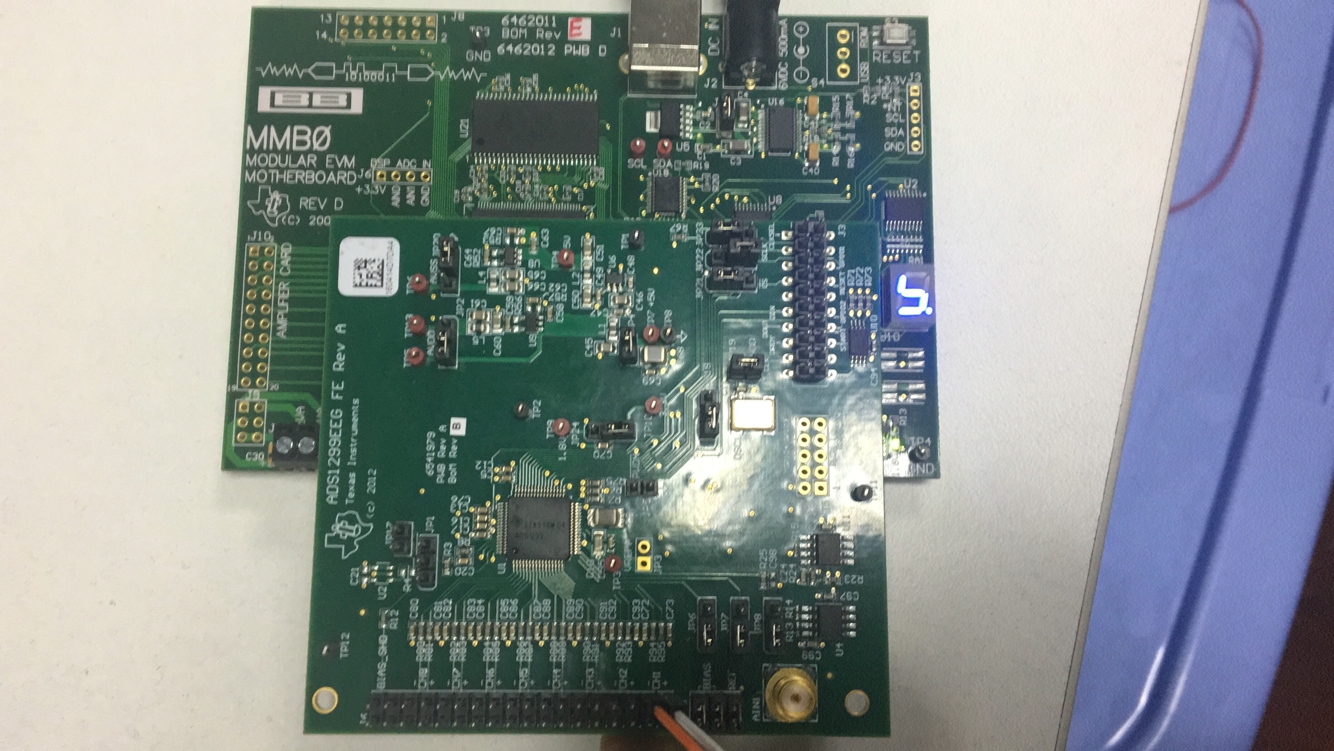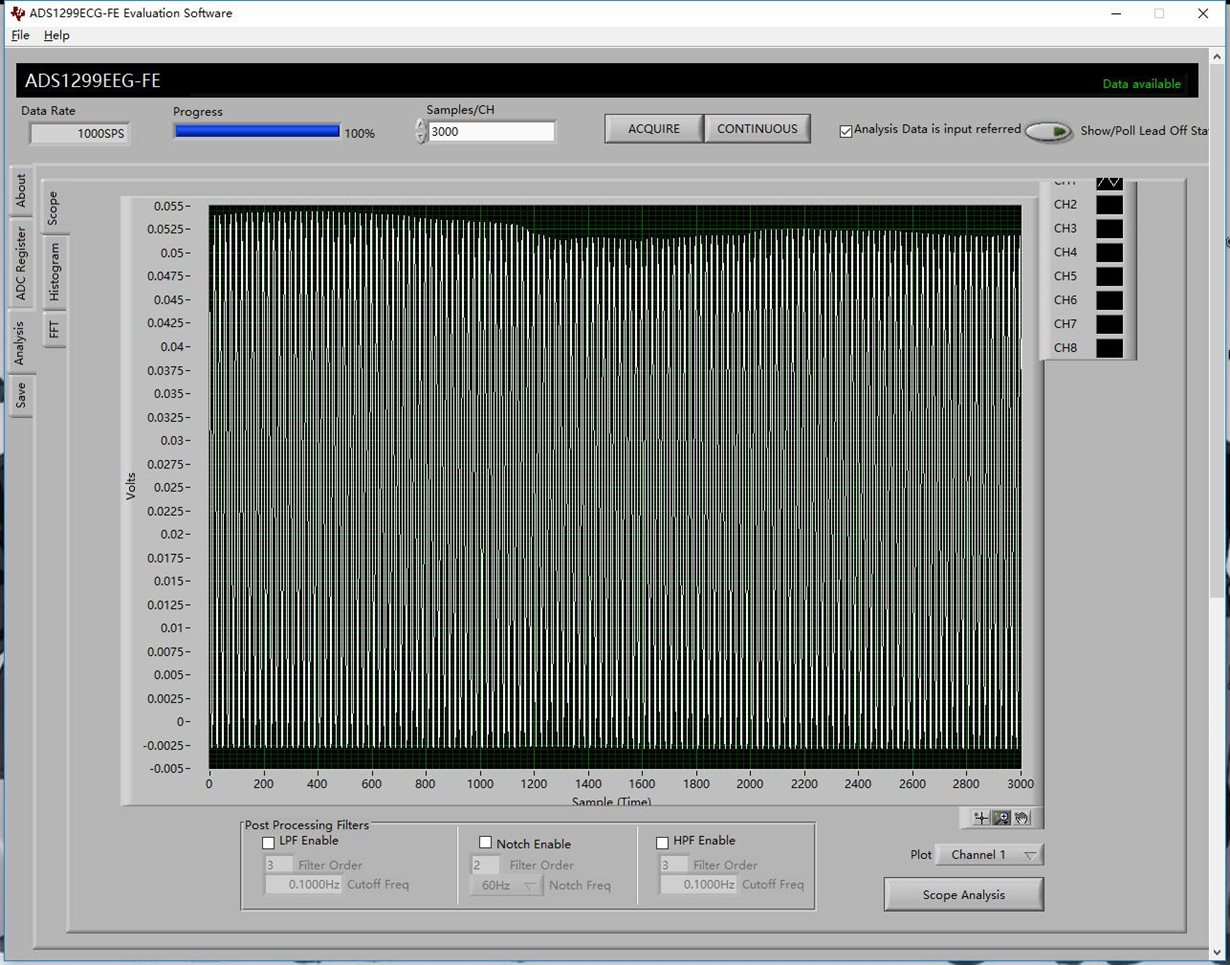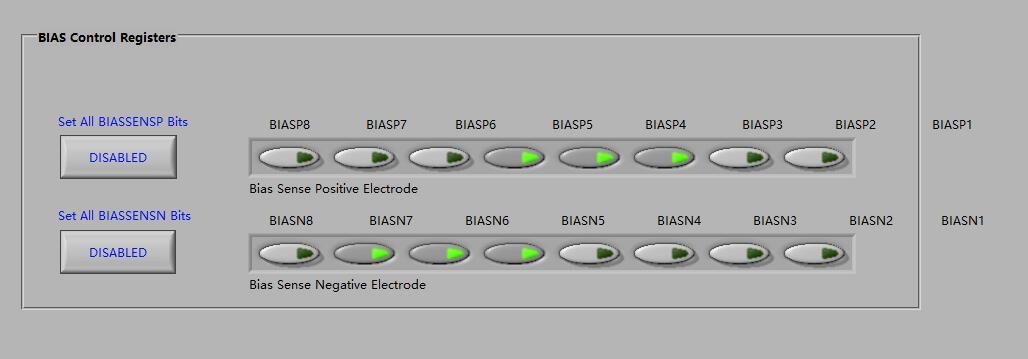Hi all
I got some problems when using ADS1299EEGFE-PDK to get some EMG data. I tried the single ended settings first as I'm going to use that in my future applications, but I failed. Then I tried to use the simplest differential input settings to try to get familiar to this board first, but I failed again. The signal I got was just 50Hz noise and I can't see the normal EMG signal in it. Here's my jumpers settings and register settings, can you guys give me some suggestions?


